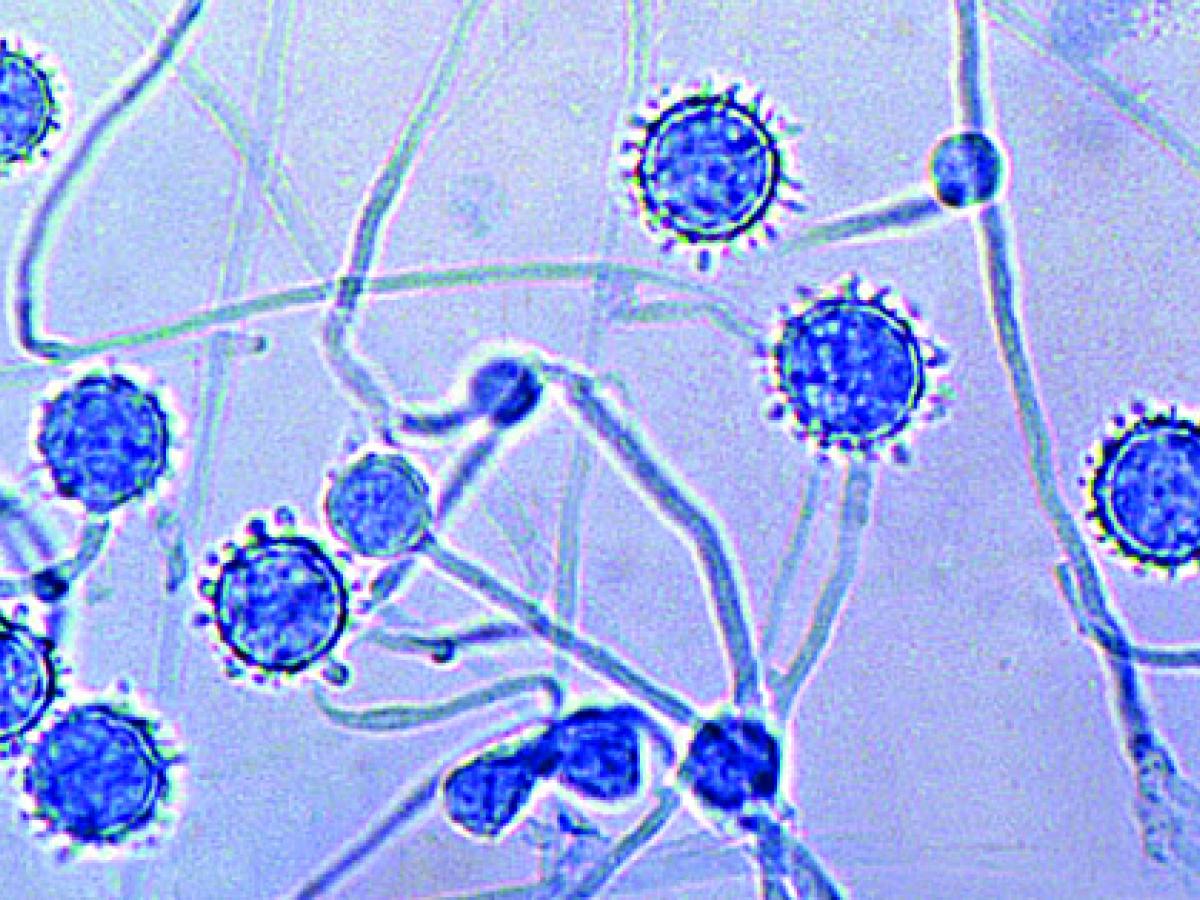Sepedonium
Sepedonium species are common soil fungi and parasites of fleshy fungi, however Yogo et al. (2014) reported an intra-abdominal infection in an immunosuppressed patient. Sepedonium species closely resemble Histoplasma capsulatum.
Note: For laboratory safety, culture identification to exclude Histoplasma capsulatum should be performed by either exoantigen test or DNA sequencing.
RG-1 organism.

Sepedonium spp. showing large, globose, thick-walled, one-celled, verrucose, terminal conidia.
Morphological description:
Colonies are moderately fast growing, usually white to golden yellow, suede-like to downy, becoming fluffy with age. Conidiophores are hyaline and non-specialised, resembling short branches of the vegetative hyphae. Conidia are terminal, solitary, or in clusters, one-celled, globose to ovoid, 7-17 µm, hyaline to amber, smooth to verrucose and usually with a thick wall.
Key features:
Hyphomycete, producing large, thick-walled, one-celled, verrucose, globose, terminal conidia from non-specialised conidiophores, resembling the macroconidia seen in Histoplasma capsulatum.
Molecular identification:
ITS and D1/D2 sequencing may be used for accurate species identification (Halliday et al. 2015).
References:
McGinnis (1980), Rippon (1988), Yogo et al. (2014).
